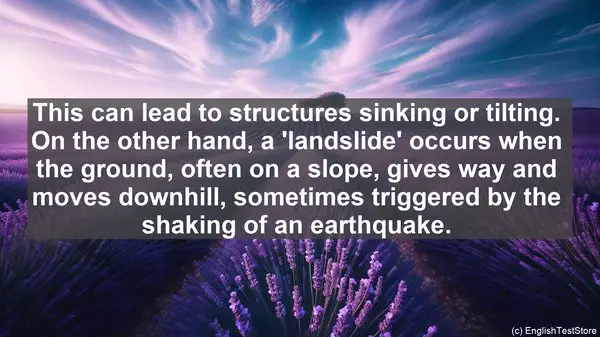Introduction
Today, we’re going to dive into the fascinating world of earthquake seismology. But before we start, it’s crucial to have a solid grasp of the terminology. In this lesson, we’ll unravel the top 10 commonly confused words in this field, ensuring you’re well-equipped to navigate the subject.
Magnitude vs. Intensity
Often used interchangeably, ‘magnitude’ and ‘intensity’ have distinct meanings. Magnitude quantifies the energy released by an earthquake, while intensity describes the effects felt at a specific location. So, while a high-magnitude quake may occur, its intensity can vary depending on the distance from the epicenter.
Focus vs. Epicenter
When an earthquake originates, it does so at the ‘focus.’ This is the point beneath the Earth’s surface where the rupture begins. On the other hand, the ‘epicenter’ is the location directly above the focus, but at the surface. So, while the focus is deep within, the epicenter is the point we often refer to when discussing the quake’s location.
Seismic Waves: P vs. S
Seismic waves play a crucial role in understanding earthquakes. ‘P-waves,’ or primary waves, are the fastest and arrive first. They compress and expand the ground, similar to how sound waves move through air. ‘S-waves,’ or secondary waves, arrive next and move the ground in a perpendicular motion. These waves are responsible for the side-to-side shaking we often associate with quakes.
Richter Scale vs. Moment Magnitude Scale
Both the Richter Scale and Moment Magnitude Scale measure earthquake strength, but they differ in their approach. The Richter Scale, developed in the 1930s, measures the amplitude of seismic waves. In contrast, the Moment Magnitude Scale, introduced later, considers the area of the fault that slipped and the energy released. Today, the Moment Magnitude Scale is the standard for measuring quakes.
Seismograph vs. Seismogram
During an earthquake, a seismograph is the instrument that detects and records the ground motion. The resulting graphical representation is called a seismogram. So, think of the seismograph as the ‘detector’ and the seismogram as the ‘result’ – the visual representation of the quake’s characteristics.

Aftershocks vs. Foreshocks
In the aftermath of a significant earthquake, we often experience ‘aftershocks.’ These are smaller quakes that occur in the same region, sometimes for days or even months. On the other hand, ‘foreshocks’ are the smaller tremors that precede a larger quake. While not all quakes have foreshocks, they can serve as a warning sign.
Seiche vs. Tsunami
Though both are water-related phenomena, ‘seiche’ and ‘tsunami’ are distinct. A seiche is a standing wave that occurs in enclosed or semi-enclosed bodies of water, like lakes or bays, due to seismic activity. In contrast, a tsunami is a series of ocean waves triggered by an undersea earthquake, often with devastating consequences when they reach the shore.

Liquefaction vs. Landslide
During an earthquake, the ground can undergo significant changes. ‘Liquefaction’ refers to when saturated soil temporarily loses its strength and behaves like a liquid. This can lead to structures sinking or tilting. On the other hand, a ‘landslide’ occurs when the ground, often on a slope, gives way and moves downhill, sometimes triggered by the shaking of an earthquake.
